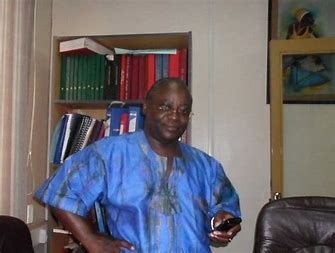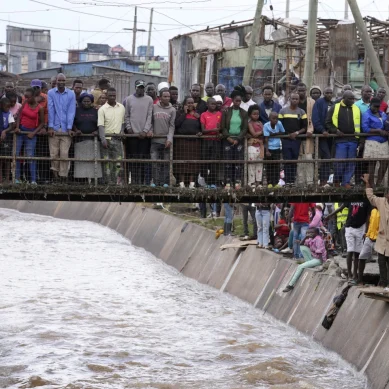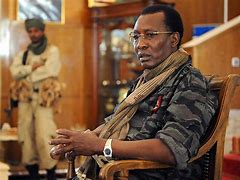
Preaching water, drinking water: How I revolutionised environmental knowledge at Makerere University
Before I began writing this article, I wanted to make sure I understood what “to revolutionise” means and what revolutionising education means. Some people say they have revolutionised something when in fact they have not. However, one thing is true. There can be as many definitions of something as there are definers.
When I sought to know what “To revolutionise” means I came across many definitions: “to produce a very great or complete change in something”;” to bring about a radical change in something”; “to make a major change in something”; to completely change the way people do something or think about something”; to change (something) very much or completely”; “to completely change something so that it is much better”; to change (something) radically or fundamentally”.
When I wanted to know what to revolutionise education means, I came across this: “to challenge the unconscious beliefs and assumptions that our current education emphasises”; to create authentic meaningful learning experiences”; In education, most changes involve a different pattern of human behaviour, a different way of behaving towards a group of young learners.
As famous scientist, Albert Einstein correctly observed, “We can’t solve problems by using the same kind of thinking we used when creating them.”
When I arrived at Makerere University in Uganda in 1991 to contribute to the academic growth and development of the university and country from the vantage point of a lecturer, it did not immediately occur to me that it was an opportunity for me to transform the academic environmental training then.
My post-graduate training was in the Biology of Conservation at Chiromo Campus of the University of Nairobi in Kenya was multidisciplinary involving a diversity of instructors from the university curriculum. At that time only the University of Nairobi of all the universities of the world was training in the Biology of Conservation. I was lucky to be the third Ugandan to be trained in the biology of conservation. The first one was the late Dr Pampa, who was followed by Professor Alfred Kambe.
Why African universities should introduce environmental studies across all disciplines – Tell
The Programme of the Biology of Conservation did not prepare learners to fit in the strictly disciplinary structure and function of Makerere University, where I found myself in the Faculty of Science’s Department of Zoology. The Faculty of Science had many virtually non-interacting departments, including of course zoology, botany, physics, chemistry, mathematics, geology and statistics. There was also an Institute of Environment and Natural Resources (MUINR).
It was zoology, botany and Makerere University Institute of Environment and Natural Resources where I interacted more with the academic staff (knowledge workers) and other workers of the Faculty of Science. I was happy to find that environment was being taught, but it was the preoccupation of knowledge workers from zoology and botany. These are the ones who also constituted the staff of (MUINR).
While I taught many courses in the department of zoology at both undergraduate and post graduate level over the years it was the teaching of environmental science that I concentrated.
My biology of conservation training concentrated on ecology (the science of interaction) and environmental conservation and management. It was not designed specifically for natural scientists only but in my 1980-1981 post-graduate group of four we were all natural scientists. This was probably not by omission or commission. I expected to have people with academic backgrounds in the arts (the humanities) and social sciences) because environment is everything and does not recognise academic territorial boundaries (i.e. boundaries between arts, social science and natural science) or the borders between the numerous disciplines (i.e. academic tribes) that characterize a strictly disciplinary university, which Makerere University was and to a very large extent still is. The only thing the designers of the biology of conservation programme did was to insert courses called Political Science for Conservation Biologists and Social Science for Conservation Biologists.
The aspect that made the programme sensitive to the human environment was the well-developed field perspective, which enabled us to interact with as many groups of people – locally expert trained experts – and the managers of forests, national parks game reserves in Kenya and East Africa. It was as if all environment was about forests, national parks and game reserves. This state of affairs reflected the general environmental outlook during that time that took environment as nothing more than the soundings of Man, Homo sapiens. In other words, Homo sapiens was apart from, not part of the environment.
Whatever the case, I learnt a lot to be able to develop my own thinking about environment and how it should be taught beyond my times at the University of Nairobi. I think my having grown up in the rural area of Nawaka and interacting with several surrounding communities and environments was central to developing a different environmental outlook.
Very early in my work, I began to see environment as a system of interconnections with four interacting dimensions: the ecological-biological dimension (the only physical dimension), the socio-cultural dimension, the socio-economic dimension and the Time (or Temporal dimension). I saw these as not mutually exclusive but inclusive and dynamically interacting to characterise particular environments with Man, Homo sapiens, being central to them.
Therefore, I thought that effective teaching and learning about the environment, must be both dimensional and holistic, with learners feeling comfortable in any dimension and holistically.
My first academic action was to change the perception, thinking, reasoning and attitudes of learners of environmental science about environment as being beyond natural science and, therefore, including dimensions other than the ecological-biological dimension. I had to instil the knowledge that environment is everything and that it is multidimensions, and any environmentally conscious leadership, governance, policy, law or action in the environment that will work must start with this knowledge.
I told them that the people and environment are not separate entities, but nurture each other in dynamic fashion in all the dimensions of the environment. It is when humanity is ignorant of the interconnectivities in the dimensions of the environment and across them that environmental destruction sets in. That was my first action when I interacted with my first group of 12 students of postgraduate students in environmental science at Makerere University.
All my succeeding groups of postgraduate students tended to come from only zoology, botany and forestry. I had to tell them that while that was okay, they would never conserve anything unless they were joined by people instructed in environment in the humanities and social science. Not only are people from those dimensions of the university curriculum the ones who frequently make policies for the environment or that violate the integrity of the environment, but they can decide to approve or undertake actions in the environment that make it difficult to conserve the environment.
My next move was to take environmental training from the faculty of science to the faculty of social science. I had to get allies in that faculty to make training in environment beyond natural science. In 1994 I linked up with the late Foster Byarugaba who was then the head of the Department of Political Science and Public Administration. We agreed that students of political science and public administration at both undergraduate and postgraduate levels must be trained in environment. Prof Byarugaba asked me to design environmental management courses for the undergraduates and postgraduates.
I was the first lecturer to teach it to both undergraduates and postgraduates in 1994. The programme was later called the Politics of Environmental Management. The students in the postgraduate programme were graduates from a diversity of fields of knowledge and practice, including engineering, law, education, human medicine, veterinary medicine and architecture. I left the programme in 1998 but it moved on well. I hope it is still an integral aspect of the training in Political Science and Public Administration at Makerere University.
My next point of call in my singular effort to revolutionise environmental training at university level was the Department of Social Work and Social Administration (SWSA) of Makerere University in 1998. How did it start?
I linked up with Professor P. J. Muzaale, who was then a senior academic of that department. I proposed to him that we could launch a masters programme in environmental planning and management. He was very receptive. He told me he was going to discuss with his colleagues in the department and come back to me. When he came back to me, it was positive. The board of the department endorsed the idea. So, the next step was to design a programme of academic training in Environmental Planning and Management. It was approved by the of the board of the department and then the board of the faculty and finally the university senate. It was a big relief.
My effort to revolutionise teaching of environmental courses at Makerere University was becoming a success story. We launched the programme shortly after. I was on the programme for ten years. By the time I retired from Makerere University service in 2009, very many students had benefited from it.
Before I left the University, I did one more act to revolutionise the teaching of environment. This time it was in MUINR, and belatedly in 2008. Up to this time environmental science had been taught as if politics did not matter. Yet decisions to conserve or not conserve is a very political matter. It is politics that makes or unmakes policies and laws that are or are not favourable to environmental conservation. It came as a surprise to me when Dr Vincent B. Muwanika, then a senior lecture in MUINR, called me to tell me Prof Frank Kansiime wanted to see me on a serious matter.
When I went to Prof Frank Kansiime’s Office, he told MUINR wanted to start a programme of training in environmental politics at masters level. He went on to say the department wanted me to design the curriculum and even be the pioneer to teach it. I willingly accepted to carry out the task. In collaboration with Dr Vincent B Muwanika, I was through with the design of the programme. And soon after all the approval processes, I started teaching environmental politics to the masters programme in MUINR.
I started with 30 students. Student liked the content very much and participated effectively during open discussions. Unfortunately, I had to retire. I left the programme running. I don’t know if it continued to attract students after I left the university the following year.
Sincerely, all students of environment in whatever dimension or department of the university should study environmental politics. Environmental politics is the different ways society attempts to deal with the political decisions needed to prevent or recover from environmental damage. It is concerned with what types of political structures are more or less likely to prioritize protecting the environment, and how effective political intervention can improve environmental conditions and the lives of people who depend on them. Indeed, students get sharpened in the sociopolitical perspective of environmental conservation and management.
Let me end this article by observing that after my efforts to spread the teaching of environment across the university curriculum most universities took note and have replicated those efforts. I am proud that most of my students are now the professors, associate professors and senior lecturers at different universities, including Makerere University, and are holding the environmental banner high.
It is important environmental curriculum designers recognise that environmental teaching or training does not recognize territorial or disciplinary boundaries so that the curriculum allows academic freedom for students to fully interact and critically think together in pursuit of knowledge to conserve the environment.
Environment requires nomadic academics within the university to seek or take environmental knowledge wherever it must be found or taken. This calls for rethinking higher education across academic territorial or academic tribal boundaries. If the current education review being undertaken does not take this in account, then whatever curricula are approved will be both environmentally useless and environmentally insensitive.
For God and My Country.
- A Tell report / By Prof Oweyegha-Afunaduula, a former professor in the Department of Environmental Sciences of the Makerere University, Uganda











